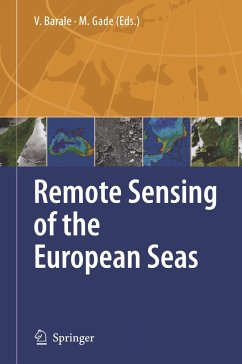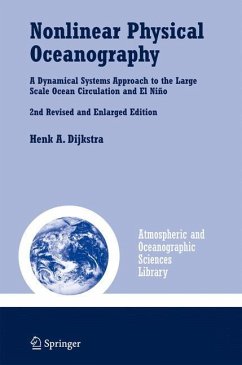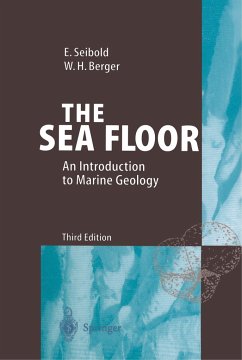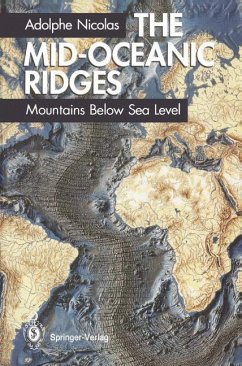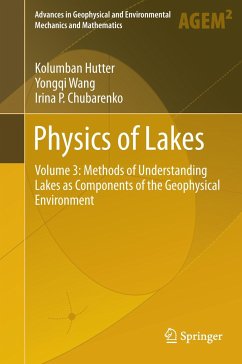
Physical Oceanography of the Dying Aral Sea
Versandkostenfrei!
Versandfertig in 1-2 Wochen
77,99 €
inkl. MwSt.
Weitere Ausgaben:

PAYBACK Punkte
39 °P sammeln!
The fate of the dying Aral Sea is globally recognised. The author opens with an introduction which will give the reader basic preliminary information about the Aral crisis, providing an historical and bibliographic overview.
Part 1- PAST - describes the pre-desiccation state of the Aral Sea as a unique system possessing both lake and sea properties. Drawing on previously unpublished data, Part 1 focuses on the hydrography of the Sea, including thermohaline structure and its variability at different scales from synoptic to seasonal and interannual, physical properties of the Aral Sea water, and the circulation regime.
Part 2 - PRESENT - describes the current state of the lake and how the desiccation and salinization process has progressed faster than had been predicted in the last two decades. A major part of this section draws on original exclusive data from recent field research, presenting remote-sensing data from satellite altimetry and infrared remote sensing showing the present sea circulation.
Part 3 - FUTURE - formulates a sound forecast of the Aral Sea state for future decades. This Part opens with a detailed discussion of the feedbacks which control the water-budget components. It emphasizes the dependence of the effective evaporation rates on density stratification and salinity. Then it presents an original model based on these feedbacks, taking into account other models developed by other investigators. The most likely scenario is that the eastern basin will have evaporated in 15 years, with the western basin shrinking slowly, with relatively stable salinity. These will be described in detail along with other possible scenarios. Finally, possible environmental consequences of further shrinking of the Aral Sea will be discussed in a concluding section.
Part 1- PAST - describes the pre-desiccation state of the Aral Sea as a unique system possessing both lake and sea properties. Drawing on previously unpublished data, Part 1 focuses on the hydrography of the Sea, including thermohaline structure and its variability at different scales from synoptic to seasonal and interannual, physical properties of the Aral Sea water, and the circulation regime.
Part 2 - PRESENT - describes the current state of the lake and how the desiccation and salinization process has progressed faster than had been predicted in the last two decades. A major part of this section draws on original exclusive data from recent field research, presenting remote-sensing data from satellite altimetry and infrared remote sensing showing the present sea circulation.
Part 3 - FUTURE - formulates a sound forecast of the Aral Sea state for future decades. This Part opens with a detailed discussion of the feedbacks which control the water-budget components. It emphasizes the dependence of the effective evaporation rates on density stratification and salinity. Then it presents an original model based on these feedbacks, taking into account other models developed by other investigators. The most likely scenario is that the eastern basin will have evaporated in 15 years, with the western basin shrinking slowly, with relatively stable salinity. These will be described in detail along with other possible scenarios. Finally, possible environmental consequences of further shrinking of the Aral Sea will be discussed in a concluding section.
Physical Oceanography of the Dying Aral Sea describes the background, present crisis state, and possible future of this peculiar inland water body from the physical oceanographic standpoint. Based on a wide range of material, a large part of which was published in Russian and has not been previously available to the international reader, the book first provides an historical overview of this unique system, which possesses both lake and sea properties.
Next, the current physical state of the lake is described, partly based on original field research and model experiments, along with the remote sensing data, model results and analyses extracted from recent literature. Next, book attempts to forecast the forthcoming state of the Aral Sea and identify plausible future scenarios. Finally, the book discusses the Aral Sea dessication viewd as a part of the global perspective.
Next, the current physical state of the lake is described, partly based on original field research and model experiments, along with the remote sensing data, model results and analyses extracted from recent literature. Next, book attempts to forecast the forthcoming state of the Aral Sea and identify plausible future scenarios. Finally, the book discusses the Aral Sea dessication viewd as a part of the global perspective.







